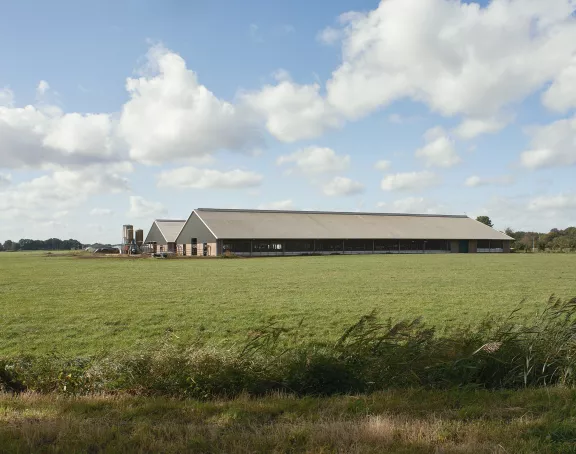External safety under the Environment and Planning Act
External safety plays a role under the Environment and Planning Act in the drafting of environmental plans and the granting of environmental permits for environmentally harmful activities. Compared to the former environmental law regime, some important changes are taking place. In this blog, we explain the new regulations and the main changes.
This post is part of the Environment and Planning Act blog series. In this blog series, we each time highlight a specific topic of the Environment and Planning Act in the run-up to its entry into force on 1 January 2024. In this blog, we address the external safety component.
What will change under the Environment and Planning Act?
Under the former environmental law regime, rules on external safety were spread across many different regulations, including the External Safety (Establishments) Decree (Besluit externe veiligheid inrichtingen; Bevi), the External Safety of Pipelines Decree (Besluit externe veiligheid buisleidingen; Bevb) and the Major Accidents Risk Decree 2015 (Besluit Risico's Zware Ongevallen 2015; Brzo). These regulations will be revoked on the entry into force of the Environment and Planning Act (Omgevingswet, the Act). However, the Transport of Dangerous Goods Act and the Basic Network Regulation based on it will remain in force under the Act, as far as transport is concerned. Under the Act, the main rules on external safety are included in the Living Environment (Quality) Decree (Besluit kwaliteit leefomgeving; Bkl) and the Living Environment (Activities) Decree (Besluit activiteiten leefomgeving; Bal), and are contained in the environmental visions and environmental plans.
Section 5.1.2 of the Bkl contains instruction rules for municipalities to ensure safety in the environmental plan (see also our blogpost on the environmental plan). Rules on external safety, in particular distance standards, for specific environmentally harmful activities can be found in Annex VII to the Bkl. Chapters 3 and 4 of the Bal contain general rules for specific environmentally harmful activities, such as the standards and technical requirements that installations for hazardous substances must comply with. Finally, the Bkl contains the assessment rules on external safety for environmental permit applications for environmentally harmful activities.
Below, we will explain in more detail the main changes compared to the former environmental law regime.
Fragile buildings and locations: separate category for ‘highly fragile buildings’
Municipalities must ensure in their environmental plans that fragile buildings and locations are protected from external safety risks. Previously, a distinction was made between 'fragile objects' (kwetsbare objecten) and 'somewhat fragile objects' (beperkt kwetsbare objecten). Under the Act, a new category is added: Article 5.3 of the Act distinguishes 'highly fragile buildings' (zeer kwetsbare gebouwen) from somewhat fragile and fragile buildings and locations. Highly fragile buildings are buildings containing groups of people who are unable to get to safety in time in the event of an unusual incident, such as primary schools, hospitals and nursing homes. These buildings previously fell in the category of fragile objects, but will receive additional protection under the Act. The designation of buildings and locations in these categories is in Annex VI of the Bkl.
Site-specific risk
As under the former environmental law regime, the competent authority must assess the site-specific risk (plaatsgebonden risico) and take into account the group risk (groepsrisico). The site-specific risk is the probability of death of an unprotected and continuously present person outside the boundaries of the location where an activity is performed, as a direct consequence of an unusual occurrence caused by that activity (Article 5.6 of the Bkl). For highly fragile buildings and fragile buildings and locations, municipalities must observe a limit value (grenswaarde) for the site-specific risk of no more than 1 in 1,000,000 per year in their environment plan (Article 5.7 of the Bkl). This corresponds to the 10-6 contour that was used as a general standard under the former environmental law regime. The limit value may be deviated from only under the conditions set out in the Bkl (Article 5.9 of the Bkl). A standard value for the site-specific risk of no more than 1 in 1,000,000 per year applies to somewhat fragile buildings and locations (Article 5.11 of the Bkl). Municipalities can deviate from this standard value more easily.
In brief, the site-specific risk means that fragile, somewhat fragile and highly fragile buildings, and fragile and somewhat fragile locations, may not be constructed within a certain distance of designated activities with external safety risks (Articles 5.8 and 5.11(2) of the Bkl). These activities, and the site-specific risk distances that apply to them, are listed in Annex VII of the Bkl.
Group risk: introduction of focus areas
The most important change for external safety under the Act is that the group risk is handled differently. The group risk is the probability of death of a group of ten or more people per year as a result of an unusual incident. There is no standard value for the group risk, but the group risk must be taken into account. This remains the basic principle under the Act. New under the Act is that focus areas (aandachtsgebieden) are designated that are located around an activity with external safety risks. Focus areas are areas that reveal where people indoors, without additional measures, may be insufficiently protected against the consequences of accidents involving hazardous substances. The Bkl distinguishes three types of focus areas: fire focus areas (brandaandachtsgebieden), explosion focus areas (explosieaandachtsgebieden) and toxic cloud focus areas (gifwolkaandachtsgebieden) (Article 5.12(1) of the Bkl). Fire and explosion focus areas are smaller than the area of influence for which a group risk assessment had to be made under the former environmental law regime. For toxic cloud focus areas, this is not always the case. The possible narrowing of these areas is related to the policy choice to limit the obligation to consider the group risk to those areas that are essential for the justification of the group risk, according to the explanatory notes to the Bkl.
The boundary of a focus area is designated per high-risk activity in Annex VII to the Bkl. For example, for a storage tank for gases – the environmentally harmful activity referred to in Article 3.22(1)(c) of the Bkl, insofar as it concerns the storage of no more than 50 m3 with an annual throughput of no more than 600 m3 – the explosion focus area is the area that lies within 160 metres from the filling point and the above-ground storage tank. The focus area applies from the moment the activity is undertaken. In other words: the focus area does not need to be designated in the environmental plan first.
In the environment plan, the group risk must be taken into account for somewhat fragile, fragile and highly fragile buildings, and for somewhat fragile and fragile locations within a focus area (Article 5.15(1) of the Bkl). The easiest way to comply with this accountability requirement is to not allow fragile locations and buildings within a focus area. If fragile locations and buildings are allowed within a focus area, measures must be taken to ensure safety (Article 5.15(2) of the Bkl). The explanatory notes to the Bkl state that these can be effect-oriented measures or measures that sufficiently limit the chance of an unusual occurrence in the risk-causing activity. An example of an impact measure is the provision of facilities through which an outflowing flammable liquid is captured by a containment channel, preventing damage to the building or site to be protected.
Municipalities can reserve space for focus areas in the environment plan. This way, space is provided for activities with external safety risks. On the other hand, municipalities can also choose to designate areas where focus areas are not possible.
Within fire and explosion focus areas, it is also possible to designate regulatory areas (voorschriftengebieden) (Article 5.14 of the Bkl). Within such a regulatory area, under Article 4.90 of the Structures (Living Environment) Decree (Besluit bouwwerken leefomgeving; Bbl), additional structural requirements apply to new development and replacement of new development of fragile, somewhat fragile and highly fragile buildings. These are, for example, requirements relating to fire resistance or the escape route to be provided in the building.
Rules for environmentally harmful activities
Environmentally harmful activities (milieubelastende activiteiten) are designated in Chapter 3 of the Bal. The articles in this chapter also determine which environmentally harmful activities require a permit and which general rules apply (see also our blogpost on this subject). The general rules relating to external safety are found in particular in Chapter 4 of the Bal. These rules determine for each environmentally harmful activity which safety regulations must be observed and which technical and other safety requirements apply to the use of installations.
The articles in Chapter 4 also determine with which parts of the Hazardous Substances Publication Series (Publicatiereeks Gevaarlijke Stoffen; PGS) an environmentally harmful activity must comply. The intention was to update all PGS directives on the entry into force of the Act. This has been achieved for many PGS directives, but revisions are still pending for a number of directives. For those PGS directives, a so-called interim version applies until then. These interim-versions are already in line with the Act.
Finally, for environmentally harmful activities that require a permit, it is important to note that the assessment rules for a permit application dealing with external safety are set out in Section 8.5.1.2 of the Bkl. The articles in this section provide, for example, that an environmental permit may be granted only if the limit value for fragile and highly fragile buildings and fragile locations for the site-specific risk is met (Article 8.12(2) of the Bkl). Other assessment rules apply specifically per environmentally harmful activity.
Conclusion
This post is part of the Environment Act blog series. An overview of all blogs in this blog series can be found here.
Further information on the background and adoption of the Environment and Planning Act can be found on our webpage www.my.stibbe.com/mystibbe/pgo. Our webpage includes the consolidated version of the Environment and Planning Act, where all the articles of the Act are provided with a relevant explanation based on the legislative history.



